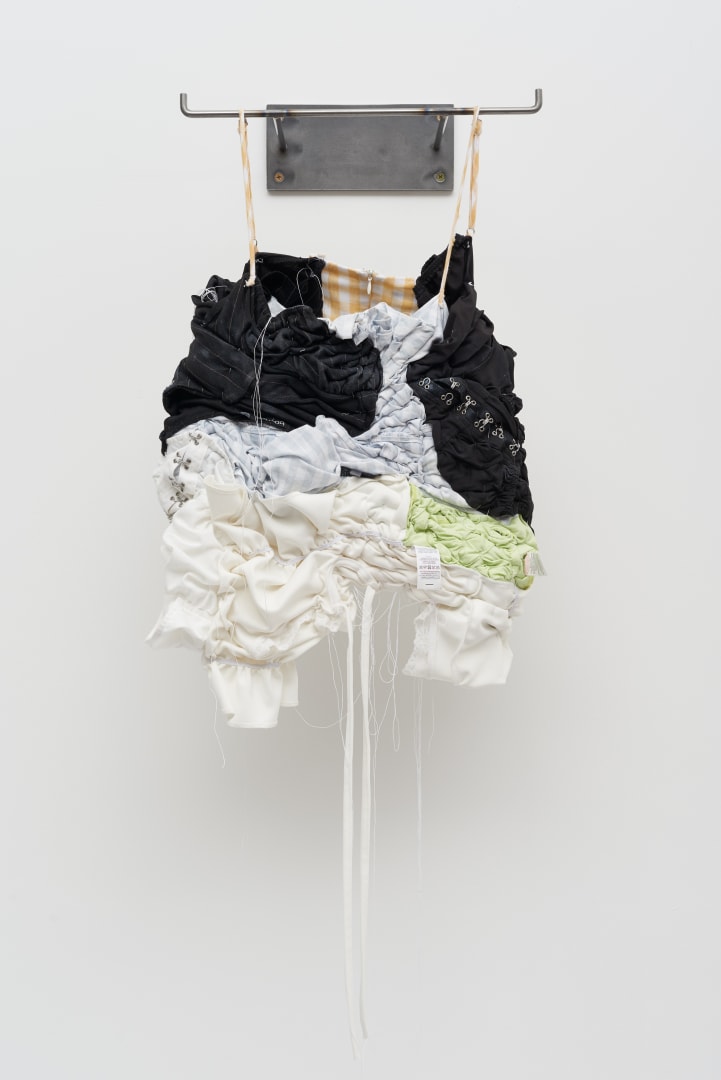Soft Opening is pleased to be hosted by PEANA for Condo Mexico City, with a solo exhibition from Tenant of Culture, titled Cutting Stock.
By disassembling and rebuilding manufactured garments, Tenant of Culture examines where ideological, political or cultural perspectives materialise in the production and marketing of apparel. The artist seeks materials sourced from various stages of the garment life cycle that relate to recent trends in fashion and their socio-political histories. The mutated former wearables exist between sculpture and product, strangely familiar to everyday articles of dress. The presentation examines the strategic codification of visual languages and techniques in luxury commodity production that obscure or expose dynamics of power, domination and assertion of class via a constant re-/de- valuation of goods.
At PEANA, a scaffold mezzanine generates a separation from the architectural and physical contours of the gallery space. Indicative of temporary storage solutions, much like those found in warehouses and distribution centres, these places of transition are increasingly important in the modern day global retail supply chain. Temporary “dark stores” — retail outlets or distribution centres that exist exclusively for online shopping — can be quickly assembled/de- assembled in order to accommodate the phenomenon that the majority of inventory of most brands is now displayed via online stores rather than in physical shops.
While resembling potentially wearable garments, the transitory, fragmented works in Cutting Stock resist pointing to any specific style or history. Haphazardly hung from hooks or draped casually across the structure, these works appear unintentionally forgotten, indexical of common processing errors such as obsolete inventory and damaged items.
The custom structure built for Cutting Stock points to the use of scaffolding as an aesthetic feature in some of the “high street” shops that remain, such as Urban Outfitters. This visual merchanidsing effort demonstrates the post-industrial romanticisation of the environments in which production occurs, which simultaneously function to obscure the actual conditions of production.
Traditionally, consumers encountered and consumed fashion via set seasonal schedules and within designated retail spaces. However, this structure is gradually being substituted by a volatile system of fast- fashion, wherein garments are designed, produced and distributed constantly and dark stores or distribution warehouses increasingly replace brick-and-mortar shops, rendering an already notoriously opaque supply chain even more inaccessible.
